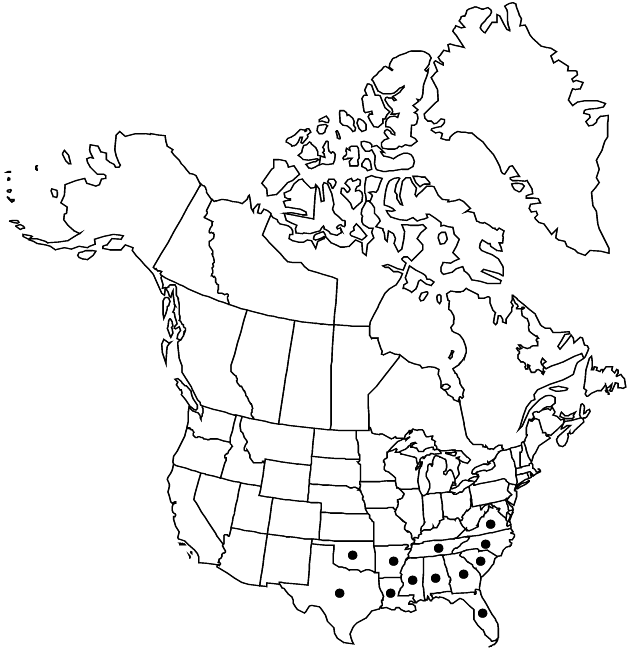Pseudognaphalium helleri
Opera Bot. 104: 147. 1991.
Annuals (fragrant), 30–100 cm; fibrous-rooted (roots relatively thick and lignescent). Stems greenish, glandular-villous (without persistent tomentum, stipitate glands mostly 0.3–1 mm, often variable, stalks broadened toward bases, about equaling gland widths). Leaf blades mostly oblong-lanceolate, 2.5–7 cm × 4–20 mm, bases not clasping, not decurrent, margins flat, faces bicolor, abaxial white to gray with lightly persistent tomentum, adaxial green, both minutely stipitate-glandular. Heads in corymbiform arrays. Involucres campanulate, 6–7 mm. Phyllaries in 4–6 series, white (opaque, shiny), ovate to ovate-oblong or oblong, ± tomentose. Pistillate florets 83–107. Bisexual florets 9–15. Cypselae ridged, smooth.
Phenology: Flowering Sep–Oct(–Nov).
Habitat: Dry woods and openings, clay and sandy clay, sand hills
Elevation: 10–300 m
Distribution

Ala., Ark., Fla., Ga., La., Miss., N.C., Okla., S.C., Tenn., Tex., Va.
Discussion
Pseudognaphalium helleri and P. micradenium are similar to P. obtusifolium in most features; both differ in their glandular stems without the persistent whitish tomentum of P. obtusifolium.
Selected References
None.